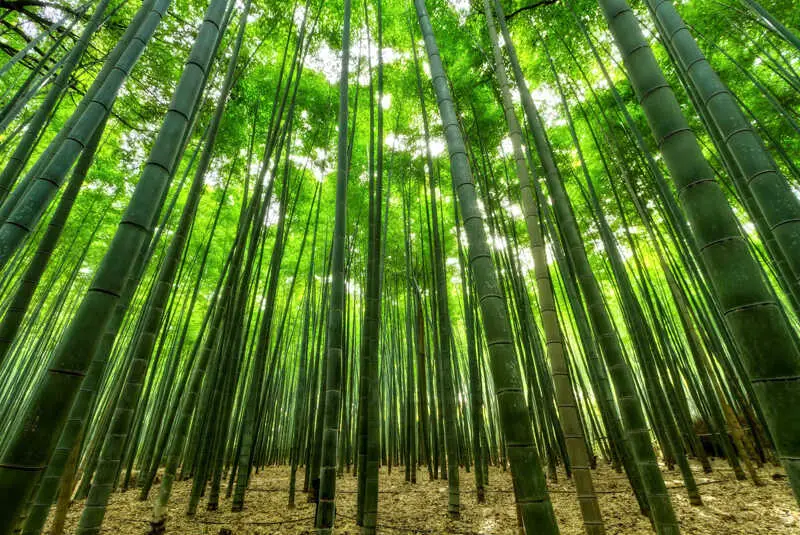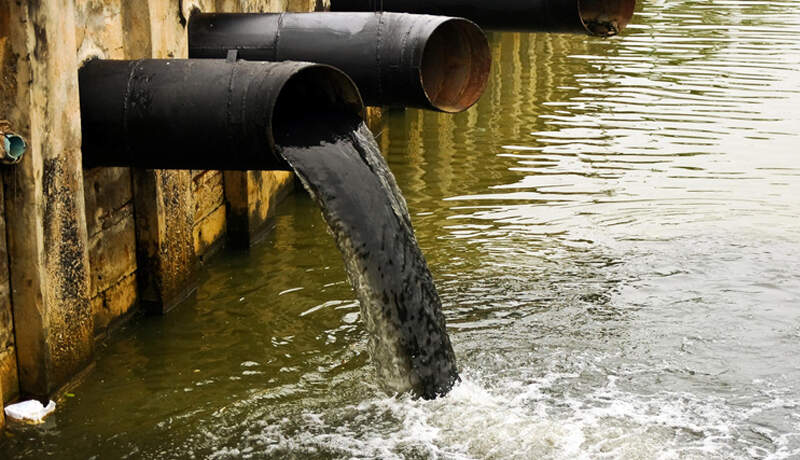How Eco-Friendly Is Bamboo Fabric? – The Truth Revealed
As an Amazon Associate, Ecotero earns from qualifying purchases.
If you’re wondering whether bamboo fabric is truly eco-friendly, then this is for you.
Bamboo is a sustainable natural resource and because of this, many people are associating different bamboo products to eco-friendliness.
The same popular eco trend has caused more and more clothing brands to substitute their usual manufacturing materials with bamboo.
These businesses then tout that their clothing made of bamboo fabric are eco-friendly and a greener option for consumers. But is it really true?
To better understand the “eco-friendliness” of bamboo clothing and protect yourself from greenwashing, we will take a closer look at the different kinds of bamboo fabrics.
You’d be surprised to know that most of them are not eco-friendly.
Let’s dive right in.
Different Types of Bamboo Fabrics
The five types of bamboo fabrics in the market are:
- Bamboo Linen
- Bamboo Rayon (Bamboo Viscose)
- Bamboo Lyocell
- Bamboo Modal
- Bamboo Cotton Blend
Bamboo fabrics are mostly produced from fibers of the tallest bamboo species, the “Moso Bamboo” (Phyllostachys edulis).
They are commonly harvested from Asia, Africa, and Central and South American countries where this noble grass is widely found.
After bamboos are harvested, they then undergo different processes to create the different kinds of bamboo fabrics.
It is in the manufacturing process that the eco-friendliness of bamboo fabric is questioned and gets flak from critics.
Here’s why.

How Is Bamboo Fabric Manufactured?
There are two methods to manufacturing different bamboo fabrics – the mechanical process and the chemical process
1. Mechanical Process
The mechanical process of producing bamboo fabric is done by crushing the bamboo plant using machines.
Then natural enzymes are added to break the bamboo into a mushy mass, after which, individual fibers are combed out and spun into a yarn and then into a bamboo fabric.
2. Chemical Process
The second (and more popular) way to produce bamboo fabric is the chemical process.
It involves dissolving bamboo chunks in different chemical solution to produce a pulpy viscous substance.
The pulpy substance is then spun into fibers and made into threads, fabrics, and bamboo sheets.
Of the two bamboo fabric manufacturing process, the mechanical process is what’s considered to be more eco-friendly because it doesn’t involve using hazardous chemicals.
That being said, not all chemical process to produce bamboo fabric are harmful to the environment.
Now, let’s see how each of the five bamboo fabrics are manufactured.
1. Bamboo Linen
According to the NRDC, Bamboo Linen is the “true green” bamboo fabric because it is made of 100% bamboo fiber with minimum pretreatment.
Bamboo Linen is also the only bamboo fabric produced using the mechanical process.
However, very few products are made using Bamboo Linen because it is rough to the touch and wrinkles quickly.
And when people buy fabric products, they’re used with the concept of it being soft.
Moreover, businesses aren’t too keen on using Bamboo Linen on their products because creating this fabric is expensive and more labor-intensive.
2. Bamboo Rayon (Bamboo Viscose)
Bamboo Rayon (also known as Bamboo Viscose) is a soft material similar to cotton and is widely used for bed sheets, pillow cases, towels, socks, shirts, undergarments, etc.
It is the most commonly used bamboo fabric in the market today.
Now, is bamboo viscose eco friendly?
Unfortunately, this bamboo fabric not eco-friendly.
And it gets worse.
Is bamboo viscose toxic?
Bamboo Rayon underwent an intensive and harsh chemical process involving bleaching and viscose, which dissolves bamboo chunks in a chemical solution using:
- Sodium Hydroxide (caustic soda);
- Sulfuric Acid, and;
- Carbon Disulfide.
All of which are known to be harmful to humans and can cause allergies, heart damage, brain damage, and other severe health issues to the workers in the viscose manufacturing process.
And it doesn’t end there.
Producing bamboo rayon also uses a huge quantity of water and the toxic chemical waste generated is then released into the rivers and drainage systems.
This process is referred to as open-cycle production which many environmental advocates criticize.

In fact, many huge names in the textile and clothing industry are blamed for pollution worldwide due to this process.
Is Bamboo Rayon a “Natural” Bamboo Fabric?
The short answer is, no, it isn’t.
When bamboo undergoes the Viscose Process, it loses all its natural attributes such as anti-bacterial properties and becomes a semi-synthetic fiber.
This is why Bamboo Rayon, unlike Bamboo Linen, is soft.
According to the FTC (Federal Trade Commission), if it feels super soft, then it’s not natural bamboo and cannot even be legally called “bamboo” at all.
But you might be wondering, what has the FTC had to do with this?
Mislabeling.
To appeal to the eco-conscious masses, many businesses are mislabeling their products as “natural bamboo.”
When, in fact, it is made of Bamboo Rayon (Bamboo Viscose) and it should be labeled as such.

Some companies such as Nordstrom, Bed Bath & Beyond, Backcountry, and J.C. Penney were fined by FTC for misconduct and violating the Textile Products Identification Act.
3. Bamboo Lyocell
Products made of Bamboo Lyocell are soft, moisture absorbent, and cool.
It is often used in sleeping apparels, bed sheets, and undergarments.
Bamboo Lyocell is produced by soaking bamboo in an organic compound made of amine oxide instead of toxic chemicals.
Furthermore, Bamboo Lyocell is produced in a closed-loop system where 99% of the solution is recovered and recycled, minimizing water and energy consumption during the manufacturing process. (source)
And the leftover waste products that are released into the air and water are minimal and considered harmless to the environment.
However, it is hard to find bamboo products made of Bamboo Lyocell because the production of this fiber, like bamboo linen, is more expensive than Bamboo Rayon.
4. Bamboo Modal
Bamboo Modal is another bamboo fabric often used in athletic clothing, lingerie, and other garments.
It is also soft, breathable, absorbent, and more durable than Bamboo Rayon.
Bamboo Modal is also produced using the Viscose Process.
The only difference is when creating Bamboo Modal, the bamboo fibers are made longer and are tightly weaved together.
Hence, making it more stronger than the typical Bamboo Rayon.
5. Bamboo Blends
Bamboo fibers can blended with cotton, spandex and other materials, creating a more durable fabric. Bamboo Blends are commonly used in personal and household garments.
The most common Bamboo Blend is the Bamboo Cotton Blend, often created with 60% Bamboo Rayon and 40% cotton or, 70% Bamboo Rayon and 30% cotton.
Bamboo Cotton Blends are perhaps the worst kind of bamboo fabric in terms of eco-friendliness.
Firstly, you are using Bamboo Rayon that is made of toxic chemicals.
Meanwhile, producing cotton fabric is labor intensive, involves harmful chemicals, and consumes huge amount of natural resources.
So next time you see a product labeled as Bamboo Cotton Blend, you know what to do.
Are Bamboo Fabrics Biodegradable?
Bamboo fiber used in fabrics, in general, is bio-degradable in soil by micro organisms and sunlight.
However, not all bamboo fabrics are bio-degradable.
Only fabrics made of Bamboo Linen and Bamboo Lyocell are truly biodegradable.
| Bamboo Fabric | Is it Biodegradable? |
|---|---|
| Bamboo Linen | Yes |
| Bamboo Rayon | No |
| Bamboo Modal | No |
| Bamboo Lyocell | Yes |
| Bamboo Blends | No |
Bamboo Rayon for example is not biodegradable because they will not break down in a reasonably short time and will either end up in landfills or being recycled.
So ideally, you want to buy bamboo fabric products that is labeled Bamboo Linen, Bamboo Lyocell (or Lyocell Bamboo), Monocel, or Tencel.
Stay away from products that have 100% Bamboo,” “Rayon of Bamboo”, or simply “Bamboo” on their labels since it’s very likely that there’s no natural bamboo left in it.
How Eco-Friendly Are The Different Bamboo Fabrics?
This table summarizes the eco-friendliness of different bamboo fabrics.
| Bamboo Fabrics | Production | Free From Toxic Chemicals? | Biodegradable? | Cost To Produce |
|---|---|---|---|---|
| Bamboo Linen | Mechanical | Yes | Yes | Expensive |
| Bamboo Rayon | Chemical | No | No | Cheap |
| Bamboo Modal | Chemical | No | No | Cheap |
| Bamboo Lyocell | Chemical | Yes | Yes | Expensive |
| Bamboo Blends | Chemical | No | No | Expensive |
Final Thoughts on Bamboo Fabrics
There you have it folks.
We hope this article has shed some light on how eco-friendly is bamboo fabric.
Because while they are touted to be a green and sustainable materials, only certain kinds of bamboo fabrics are truly eco-friendly.
And in reality, very few bamboo fabric products in the market today can be genuinely considered eco-friendly.
A vast majority of them are made with Bamboo Rayon, which might be soft and comfortable, but has an expensive toll to our environment and to the laborers’ health.
But we would love to hear your thoughts on bamboo fabrics and how would you rate it in terms of sustainability.
And after reading this, would you buy (or continue to buy) bamboo clothing?
Feel free to leave a comment below.
FAQ about Bamboo Fabrics
What are the disadvantages of bamboo fabric?
Many bamboo fabrics used in products are produced using toxic chemicals that are harmful to the environment, people, and animals.
Is bamboo fabric more sustainable than cotton?
Bamboo lyocell and bamboo linen are more sustainable than traditional cotton.
Which fabric is most environmentally friendly?
There are many eco-friendly bamboo fabrics, bamboo lyocell is one of them. But as to which is the most environmentally friendly fabric is still up to debate. It all depends on how a fabric is produced, process, and disposed.
Are bamboo fabrics biodegradable?
Based on our research, the only bamboo fabrics that are truly biodegradable are bamboo lyocell and organic bamboo linen.

Good source of info.
Thank you so much
For the true information
Bamboo viscose/rayon can also be made using a closed-loop process.
Bamboo viscose/rayon that are OEKO-TEX certified should be free from toxic chemicals and biodegradable.
The following study shows bamboo viscose/rayon is antibacterial to Escherichia coli and Staphylococcus aureus. https://bioresources.cnr.ncsu.edu/resources/resistance-of-natural-bamboo-fiber-to-microorganisms-and-factors-that-may-affect-such-resistance/